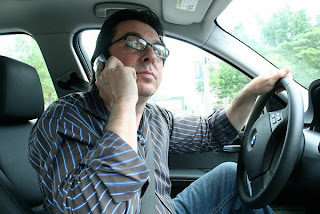… but not necessarily in that order. I was brought to muse about the modern approach to communication when I attended a Queensland Choir Festival yesterday.
(The incredibly talented granddaughters were both singing in participating choirs; and devoted grandmother was there to bask in their glory!)
However, that wasn’t what gave me cause for thought. After one choir had participated, they took up seats in front of us to listen to the rest of the programme. Their selection had been enthusiastically received and they were obviously interested in the performance of the other choirs … or so I thought.
The obviously Grade 12 student who sat a little in front and below me proceeded to pull out his phone and started to text messages off left right and centre. Intrigued, I forgot my own grandmother’s tenets about privacy and surreptitiously looked over his shoulder. His message read “Choir three – great sound”.
Well – that should give them a picture of what was happening on stage, shouldn’t it? But being a pedant about communication, my immediate thought response was – “well, why was the sound ‘great?’” “What differentiated this choir from the other choirs?” and “What actually constitutes a ‘great’ sound?”
You see, I want to know – and I have always understood communication to be the main process of understanding. I cannot see that I am adding to the process of world knowledge when all I have to say is “Great Sound”. What is communicated so tersely only leads to more questions, and the means of communication used does not lend itself to the clarification of those questions; unless I now spend another twenty minutes responding to questions in … er… how many characters do I have again?
Such lack of attention to what is going on around them is not limited to teenagers either. Some months ago, I was talking to a fellow trainer who commented on the number of participants who texted throughout his presentations. He was, he told me, inclined to get a trifle ‘huffy’ about this until he realised that they were texting each other about the topic. Well; that makes it all right then! Or does it?
What information can they get from each other that they cannot get more credibly from the instructor, the teacher or the trainer?
Isn’t that the reason why we now have legislation about driving when speaking on the mobile phone. Let’s review it …
Back in 2006 researches at the University of Utah published information that demonstrated speaking on the mobile phone distracted drivers to a dangerous degree.
But, recognising the dangers of handheld cell phones, the phone companies brought out Hands Free designs – and so the dangers were diverted.
However, even though more and more of us are virtuously using ‘hands free’ devices in our car – the risk to our safety has not been improved. And the reason is not far to find.
While they free your hands for the steering wheel, hands-free phones don’t make driving any safer, says Professor Mark Stevenson, senior director at The George Institute at the University of Sydney
When you answer your mobile phone while you are behind the wheel you disengage from the task of driving. Talking on a mobile phone also makes you less focused on the road itself and traffic conditions. It’s this lack of attention to driving conditions that slows down your reaction time, thereby increasing your chances of having an accident. ABC Talking Health
You see it is not the actual physical distraction of trying to manoeuvre a car whilst holding a phone in one hand that is the primary cause of loss of safety – it is the diverting of the mental concentration.
When I am mentally focused on the details of the phone conversation, I am not giving the task of appreciating the road conditions and predicting possible outcomes my full consideration. That is what is so devastatingly dangerous.
Texting in the training session creates the same lack of concentration. While, not giving our full attention to the trainer may not have the same critical outcome as when driving; it does actually affect the way in which we absorb information, and process understanding. And tweeting is the same problem with another name.
And depending on the reason for the training session that can have a critical impact on what we do. Indeed, if we are not fully connected with the training we may not even realise that we have missed a valuable piece of information.
So unlike my fellow trainer who tolerates his participants texting and tweeting during his session, I have decided that no such tolerance will reign in my training room!
Full understanding needs full concentration, and detailed communication. It also needs clarification of doubtful points, and two way interaction in real time. Without that we have, at best, only a partial comprehension of the subject – and we all know that “A Little Learning is a Dangerous Thing” – and so is texting in a Trischel training session – and that includes Tweeting.
Michele @ Trischel


